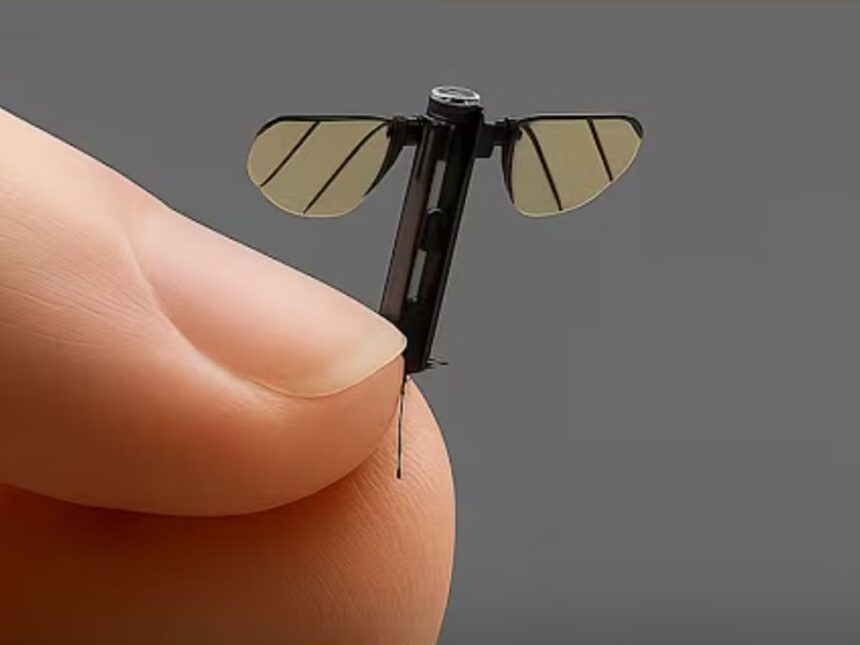China reveals a new tiny spy drone modeled after a mosquito. This bionic microdrone blends stealth and technology, promising a new era in battlefield reconnaissance. It’s roughly 2 cm long, weighs just 0.3 grams, and boasts wings flapping 500 times per second. This insect-like drone can evade detection, providing covert intelligence gathering capabilities.
What’s Happening & Why This Matters
The National University of Defence Technology (NUDT) showcased the mosquito drone on China’s state-run CCTV-7 military channel on June 20, 2025. Liang Hexiang, a student at NUDT, explains that this miniature robot is suited for special missions that require discreet surveillance. The device’s tiny size and agile movement make it hard for traditional radar to spot.
The drone’s body is equipped with sensors designed for reconnaissance and battlefield tasks. A variant with four wings, which is controllable via a smartphone, also emerged. However, the exact data types it collects remain undisclosed.

Microdrones like these are shaping modern warfare globally. Norway’s palm-sized Black Hornet drone is an example already deployed by several militaries, including the US. It utilizes cameras and thermal imaging to execute quick and stealthy missions.
The US DARPA lab’s 2006 Hybrid Insect Micro-Electro-Mechanical Systems (HI-MEMS) project aimed to create ‘insect cyborgs’ — blending biology and technology. China’s mosquito drone fits this trend, emphasizing miniaturization and stealth.
This development is part of a global race in microdrone tech for battlefield advantage. Smaller drones mean more covert operations, reduced risk, and more precise data collection. China’s entry pushes the envelope on drone innovation and military tactics.
TF Summary: What’s Next
China’s mosquito spy drone is a leap forward in microdrone technology. As similar drones continue to shrink and become smarter, they will redefine surveillance and intelligence gathering. Militaries worldwide are closely watching as these drones integrate AI and remote control, thereby enhancing battlefield awareness.
Future advances will focus on enhanced stealth, extended flight times, and sophisticated sensor arrays. Nations investing in microdrone tech may gain critical advantages in both offensive and defensive operations.
— Text-to-Speech (TTS) provided by gspeech


